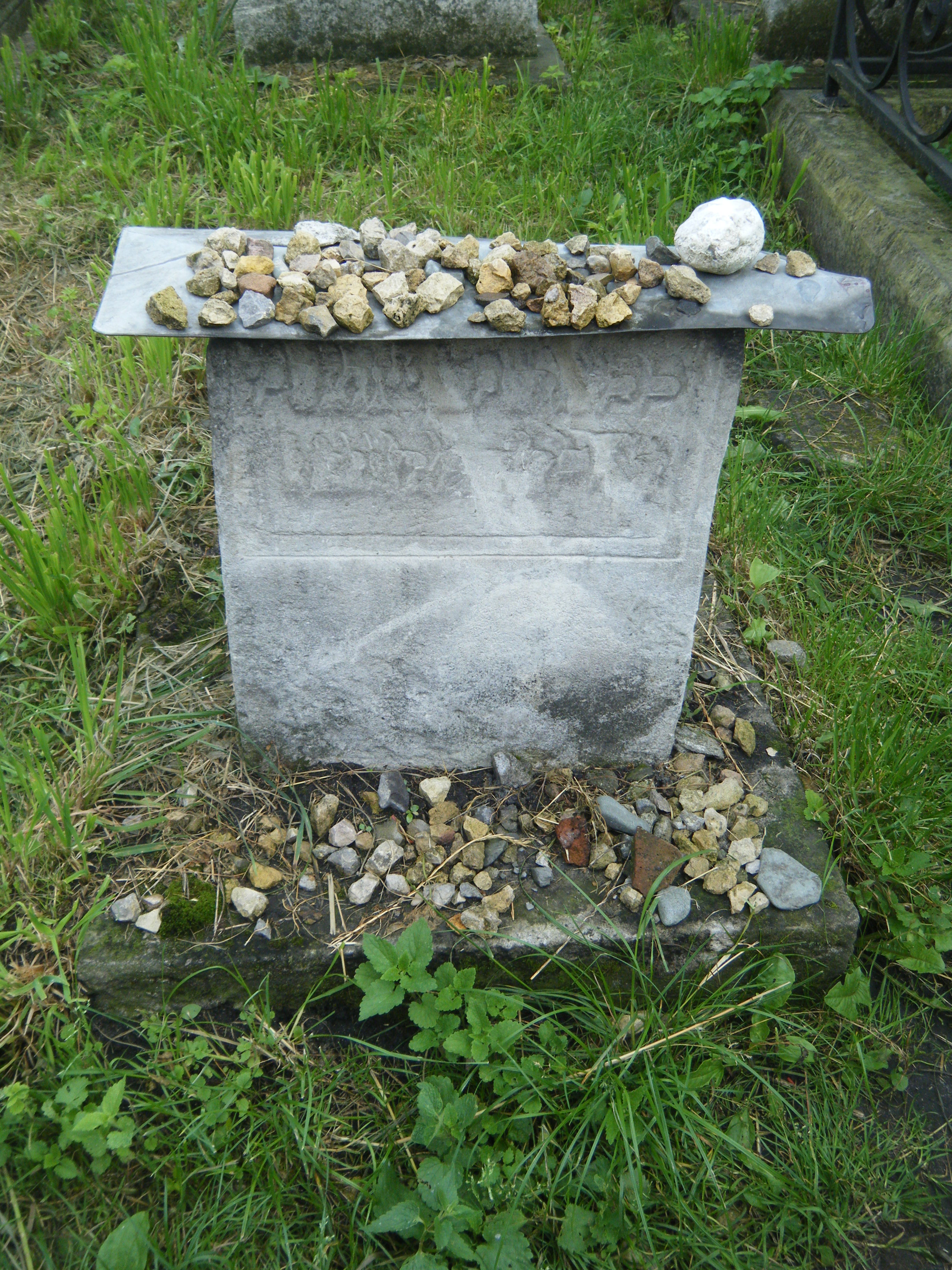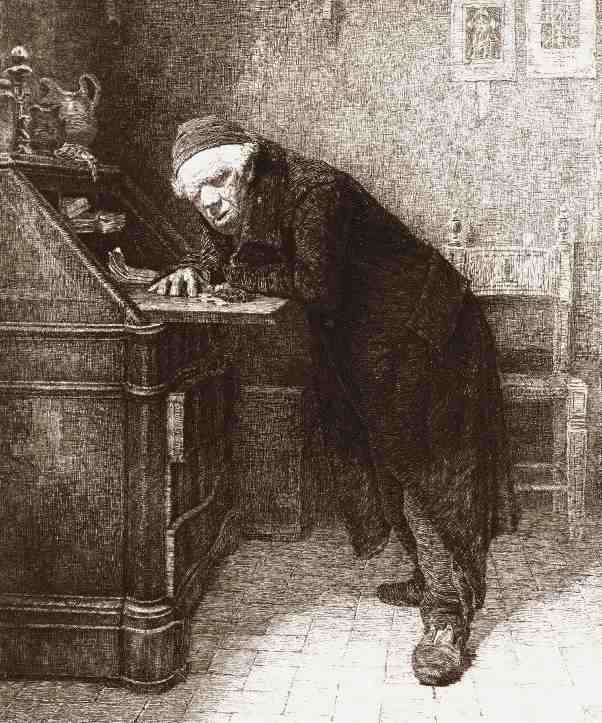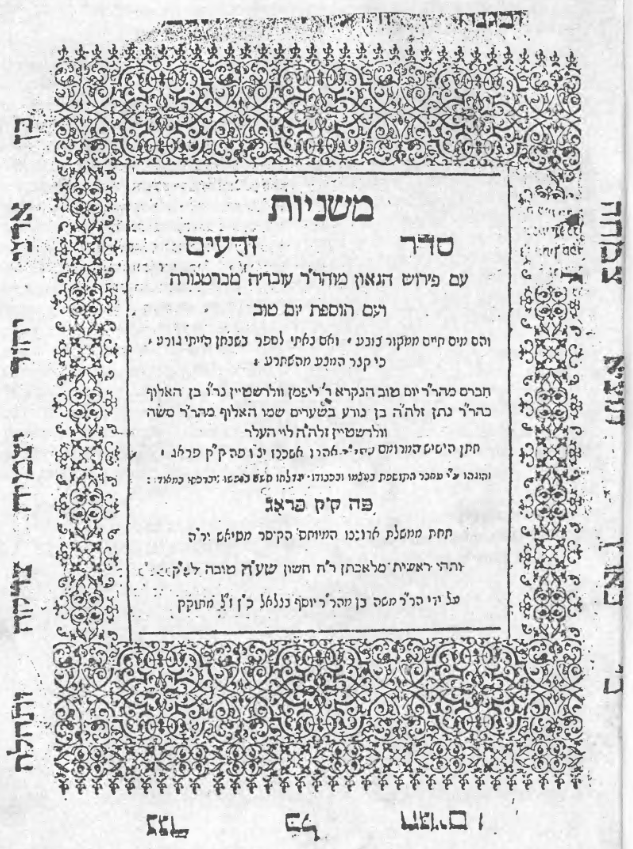|
Yossele The Holy Miser
Yossele the Holy Miser was a Jew who lived in the Kazimierz Jewish quarter of Kraków in the 17th century. His apparent stinginess but hidden generosity is at the center of a well-known tale of Jewish folklore that speaks to one of the highest levels of ''tzedakah'' (charity) in the Jewish tradition: giving anonymously. The Holy Miser's tombstone can be found in the Remah Cemetery of Kraków next to the grave of the renowned Rabbi Yom-Tov Lipmann Heller. Jewish folktale According to the general outline of the legend, the richest Jew in Kraków in the 17th century was Yossele the Miser. He was known by this title because in the community he was reviled for his stinginess and refusal to contribute to ''tzedakah'' (charity) despite his great wealth. When the Miser died, the townspeople who long despised him refused to bury his body for several days. Out of scorn, they eventually buried him in the back of the cemetery, an area normally reserved for paupers and other societal outcast ... [...More Info...] [...Related Items...] OR: [Wikipedia] [Google] [Baidu] |
Miser
A miser is a person who is reluctant to spend, sometimes to the point of forgoing even basic comforts and some necessities, in order to hoard money or other possessions. Although the word is sometimes used loosely to characterise anyone who is mean with their money, if such behaviour is not accompanied by taking delight in what is saved, it is not properly miserly. Misers as a type have been a perennial object of popular fascination and a fruitful source for writers and artists in many cultures. Accounting for misers One attempt to account for miserly behaviour was Sigmund Freud's theory of anal retentiveness, attributing the development of miserly behaviour to toilet training in childhood, although this explanation is not accepted by modern evidence-based psychology. In the Christian West the attitude to those whose interest centred on gathering money has been coloured by the teachings of the Church. From its point of view, both the miser and the usurer were guilty of the ... [...More Info...] [...Related Items...] OR: [Wikipedia] [Google] [Baidu] |
17th-century Polish Jews
The 17th century lasted from January 1, 1601 ( MDCI), to December 31, 1700 ( MDCC). It falls into the early modern period of Europe and in that continent (whose impact on the world was increasing) was characterized by the Baroque cultural movement, the latter part of the Spanish Golden Age, the Dutch Golden Age, the French ''Grand Siècle'' dominated by Louis XIV, the Scientific Revolution, the world's first public company and megacorporation known as the Dutch East India Company, and according to some historians, the General Crisis. From the mid-17th century, European politics were increasingly dominated by the Kingdom of France of Louis XIV, where royal power was solidified domestically in the civil war of the Fronde. The semi-feudal territorial French nobility was weakened and subjugated to the power of an absolute monarchy through the reinvention of the Palace of Versailles from a hunting lodge to a gilded prison, in which a greatly expanded royal court could be more easil ... [...More Info...] [...Related Items...] OR: [Wikipedia] [Google] [Baidu] |
Maimonides
Musa ibn Maimon (1138–1204), commonly known as Maimonides (); la, Moses Maimonides and also referred to by the acronym Rambam ( he, רמב״ם), was a Sephardic Jewish philosopher who became one of the most prolific and influential Torah scholars of the Middle Ages. In his time, he was also a preeminent astronomer and physician, serving as the personal physician of Saladin. Born in Córdoba, Almoravid Empire (present-day Spain), on Passover eve, 1138 (or 1135), he worked as a rabbi, physician and philosopher in Morocco and Egypt. He died in Egypt on 12 December 1204, when his body was taken to the lower Galilee and buried in Tiberias. During his lifetime, most Jews greeted Maimonides' writings on Jewish law and ethics with acclaim and gratitude, even as far away as Iraq and Yemen. Yet, while Maimonides rose to become the revered head of the Jewish community in Egypt, his writings also had vociferous critics, particularly in Spain. Nonetheless, he was posthumously ackno ... [...More Info...] [...Related Items...] OR: [Wikipedia] [Google] [Baidu] |
Remuh Cemetery
The Old Jewish Cemetery of Kraków ( pl, Stary cmentarz żydowski w Krakowie), more commonly known as the Remah Cemetery ( pl, Cmentarz Remuh), is a historic necropolis established in the years 1535–1551, and one of the oldest existing Jewish cemeteries in Poland. It is situated at 40 Szeroka Street in the Kazimierz district of Kraków, beside the 16th-century Remah Synagogue. The cemetery bears the name of Rabbi Moses Isserles, whose name is abbreviated as Remah. The cemetery was closed in around 1850; the nearby New Jewish Cemetery at 55 Miodowa Street then became the new burial ground for the city's Jews. Izaak Jakubowicz, donor of the Izaak Synagogue, is also buried at the cemetery. During the German occupation of Poland, the Nazis destroyed the site by tearing down walls and hauling away tombstones to be used as paving stones in the camps, or selling them for profit. The tombstone of the Remah (Rabbi Moses Isserles) is one of the few that remained intact. The cemetery ... [...More Info...] [...Related Items...] OR: [Wikipedia] [Google] [Baidu] |
Honorifics For The Dead In Judaism
Among the honorifics in Judaism, there are several traditional honorifics for the dead which are used when naming and speaking of the deceased. Different honorifics might be applied depending on the particular status of the deceased. These honorifics are frequently found on gravestones, on memorial walls inside the sanctuary of synagogues, in speeches, and in writing such as in obituaries. In writing, it is most common to use the name followed by an abbreviation of an honorific either in Hebrew or English. For examples, see chart. Comparison chart The following chart shows different honorifics used, along with their abbreviation in Hebrew and English, their translation, the masculine and feminine forms, the type of person which the honorific is applied to, and examples. General honorifics Some honorifics may be used for any individual. These honorifics are generally not used for rabbis or other special persons, since the specific honorifics for those people are used ins ... [...More Info...] [...Related Items...] OR: [Wikipedia] [Google] [Baidu] |
Tzadik
Tzadik ( he, צַדִּיק , "righteous ne, also ''zadik'', ''ṣaddîq'' or ''sadiq''; pl. ''tzadikim'' ''ṣadiqim'') is a title in Judaism given to people considered righteous, such as biblical figures and later spiritual masters. The root of the word ''ṣadiq'', is '' ṣ- d- q'' ( ''tsedek''), which means "justice" or "righteousness". When applied to a righteous woman, the term is inflected as ''tzadika/tzaddikot''. ''Tzadik'' is also the root of the word ''tzedakah'' ('charity', literally 'righteousness'). The term ''tzadik'' "righteous", and its associated meanings, developed in rabbinic thought from its Talmudic contrast with ''hasid'' ("pious" honorific), to its exploration in ethical literature, and its esoteric spiritualisation in Kabbalah. Since the late 17th century, in Hasidic Judaism, the institution of the mystical tzadik as a divine channel assumed central importance, combining popularization of (hands-on) Jewish mysticism with social movement for th ... [...More Info...] [...Related Items...] OR: [Wikipedia] [Google] [Baidu] |
Rabbi
A rabbi () is a spiritual leader or religious teacher in Judaism. One becomes a rabbi by being ordained by another rabbi – known as '' semikha'' – following a course of study of Jewish history and texts such as the Talmud. The basic form of the rabbi developed in the Pharisaic (167 BCE–73 CE) and Talmudic (70–640 CE) eras, when learned teachers assembled to codify Judaism's written and oral laws. The title "rabbi" was first used in the first century CE. In more recent centuries, the duties of a rabbi became increasingly influenced by the duties of the Protestant Christian minister, hence the title " pulpit rabbis", and in 19th-century Germany and the United States rabbinic activities including sermons, pastoral counseling, and representing the community to the outside, all increased in importance. Within the various Jewish denominations, there are different requirements for rabbinic ordination, and differences in opinion regarding who is recognized as a rabbi. For ex ... [...More Info...] [...Related Items...] OR: [Wikipedia] [Google] [Baidu] |
Bereavement In Judaism
Bereavement in Judaism () is a combination of ''minhag'' and ''mitzvah'' derived from the Torah and Judaism's classical rabbinic texts. The details of observance and practice vary according to each Jewish community. Mourners In Judaism, the principal mourners are the first-degree relatives: parent, child, sibling, and spouse. There are some customs that are unique to an individual mourning a parent. Halachot concerning mourning do not apply to those under thirteen years of age, nor do they apply when the deceased is aged 30 days or less. Upon receiving news of the death Upon receiving the news of the death, the following blessing is recited: : :Transliteration: :Translation: "Blessed are You, Lord, our God, King of the universe, the Judge of Truth lt., the Just Judge" There is also a custom of rending one's clothes at the moment one hears news of a death. Another prevalent custom is to tear at the funeral.Klein, Isaac, A Guide to Jewish Religious Practice, Ktav Publishing ... [...More Info...] [...Related Items...] OR: [Wikipedia] [Google] [Baidu] |
Legend
A legend is a Folklore genre, genre of folklore that consists of a narrative featuring human actions, believed or perceived, both by teller and listeners, to have taken place in human history. Narratives in this genre may demonstrate human values, and possess certain qualities that give the tale verisimilitude (literature), verisimilitude. Legend, for its active and passive participants may include miracles. Legends may be transformed over time to keep them fresh and vital. Many legends operate within the realm of uncertainty, never being entirely believed by the participants, but also never being resolutely doubted. Legends are sometimes distinguished from myths in that they concern human beings as the main characters rather than gods, and sometimes in that they have some sort of historical basis whereas myths generally do not. The Brothers Grimm defined ''legend'' as "Folklore, folktale historically grounded". A by-product of the "concern with human beings" is the long list o ... [...More Info...] [...Related Items...] OR: [Wikipedia] [Google] [Baidu] |
Kever Tosafot Jom Tov Lipmann Heller (1854–1922), Dutch painter
{{Disambig, surname ...
Kever may refer to: * A tomb or grave * Hein Kever Jacob Simon Hendrik Kever, known as Hein (19 June 1854 in Amsterdam – 29 April 1922 in Amsterdam) was a Dutch genre and still-life painter; associated with the Laren School. Biography He was born into a wealthy family. He showed little abil ... [...More Info...] [...Related Items...] OR: [Wikipedia] [Google] [Baidu] |
Yom-Tov Lipmann Heller
Rabbi Gershon Shaul Yom-Tov Lipmann ben Nathan ha-Levi Heller (c. 157919 August 1654), was a Bohemian rabbi and Talmudist, best known for writing a commentary on the Mishnah called the ''Tosefet Yom-Tov'' (1614–1617). Heller was one of the major Talmudic scholars in Prague and in Poland during the "Golden Age" before 1648. Education and rabbinic career After Heller was born in Wallerstein, Bavaria, he was raised by his grandfather, Rabbi Moses Ha-Levi Heller, as his father died at the age of 18 before he was even born. As a teenager Heller was sent to Friedberg, near Wallerstein, where he studied in the Yeshiva of Rabbi Jacob Günzburg. From there he moved to Prague, where he became a disciple of the Maharal, head of the yeshiva of Prague. In 1597, when Heller was scarcely 18 years old, he received a Semicha (appointment) as a Dayan (rabbinic judge) in that city. In October 1624 Heller was called to the rabbinate of Mikulov, Moravia, and in March 1625, became rabbi of Vienna. L ... [...More Info...] [...Related Items...] OR: [Wikipedia] [Google] [Baidu] |







